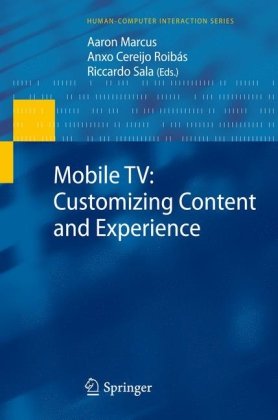

Most ebook files are in PDF format, so you can easily read them using various software such as Foxit Reader or directly on the Google Chrome browser.
Some ebook files are released by publishers in other formats such as .awz, .mobi, .epub, .fb2, etc. You may need to install specific software to read these formats on mobile/PC, such as Calibre.
Please read the tutorial at this link: https://ebookbell.com/faq
We offer FREE conversion to the popular formats you request; however, this may take some time. Therefore, right after payment, please email us, and we will try to provide the service as quickly as possible.
For some exceptional file formats or broken links (if any), please refrain from opening any disputes. Instead, email us first, and we will try to assist within a maximum of 6 hours.
EbookBell Team

5.0
80 reviewsMobile TV: Customizing Content and Experience documents current research and case studies of design practice that seek to improve the mobile television experience. Developing usable, useful, and appealing solutions for the customer or user experience, i.e., successful products and services, requires customization according to specific users' needs amidst frequently changing physical and social environments. Complex design problems like these require interdisciplinary perspectives that cover software functionality, human interaction and communication experiences, and perceived value. Contributors from academia, business, and design have contributed their collective expertise and experience to deliver wisdom on all fronts.
Divided into seven parts, the book's first chapter establishes definitions and summarizes current research and development. The subsequent chapters specifically look at Mobile TV experience in everyday life, innovative conceptual and participatory design methods, contextual analysis methods, social context for interactive multimedia systems, advanced interaction with mobile digital content, and future trends for the wide range of products and services that will be offered in the decade to come.
A balance between theoretical and empirical approaches provides insight into principles and methods, as well as actionable guidelines and recommendations for all those interested in exploring how to achieve the core objectives of usability, usefulness, and social appeal of this new mobile-video technology. The book answers many questions, but also raises some new ones that only future technology development and deployment in mobile human-computer interaction and communication can answer.